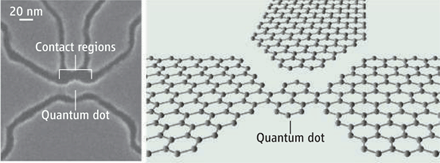The lack of availability of clean water to many of the world’s population currently leads to suffering and premature death for millions of people, and as population pressures increase, climate change starts to bite, and food supplies become tighter (perhaps exacerbated by an ill-considered move to biofuels) these problems will only intensify. It’s possible that nanotechnology may be able to contribute to solving these problems (see this earlier post, for example). A couple of weeks ago, Nature magazine ran a special issue on water, which included a very helpful review article: Science and technology for water purification in the coming decades. This article (which seems to be available without subscription) is all the more helpful for not focusing specifically on nanotechnology, instead making it clear where nanotechnology could fit into other existing technologies to create affordable and workable solutions.
One sometimes hears the criticism that there’s no point worrying about the promise of new nanotechnological solutions, when workable solutions are already known but aren’t being implemented, for political or economic reasons. That’s an argument that’s not without force, but the authors do begin to address it, by outlining what’s wrong with existing technical solutions. “These treatment methods are often chemically, energetically and operationally intensive, focused on large systems, and thus require considerable infusion of capital, engineering expertise and infrastructure” Thus we should be looking for decentralised solutions, that can be easily, reliably and cheaply installed using local expertise and preferably without the need for large scale industrial infrastructure.
To start with the problem of the sterilisation of water to kill pathogens, traditional methods start with chlorine. This isn’t ideal, as some pathogens are remarkably tolerant of it, and it can lead to toxic by-products. Ultra-violet sterilisation, on the other hand, offers a lot of promise – it’s good for bacteria, though less effective for viruses. But in combination with photocatalytic surfaces of titanium dioxide nanoparticles it could be very effective. Here what is required is either much cheaper sources of ultraviolet light, (which could come from new nanostructured semiconductor light emitting diodes) or new types of nanoparticles with surfaces excited by lower wavelength light, including sunlight.
Another problem is the removal of contamination by toxic chemicals, which can arise either naturally or through pollution. Problem contaminants include heavy metals, arsenic, pesticide residues, and endocrine disrupters; the difficulty is that these can have dangerous effects even at rather low concentrations, which can’t be detected without expensive laboratory-based analysis equipment. Here methods for robust, low cost chemical sensing would be very useful – perhaps a combination of molecular recognition elements integrated in nanofluidic devices could do the job.
The reuse of waste water offers hard problems because of the high content organic matter that needs to be removed, in addition to the removal of other contaminants. Membrane bioreactors combine the use of the sorts of microbes that are exploited in activated sludge processes of conventional sewage treatment with ultrafiltration through a membrane to get faster throughputs of waste water. The tighter the pores in this sort of membrane, the more effective it is at removing suspended material, but the problem is that this sort of membrane quickly gets blocked up. One solution is to line the micro- and nano- pores of the membranes with a single layer of hairy molecules – one of the paper’s co-authors, MIT’s Anne Mayes, developed a particularly elegant scheme for doing this exploiting self-assembly of comb-shaped copolymers.
Of course, most of the water in the world is salty (97.5%, to be precise), so the ultimate solution to water shortages is desalination. Desalination costs energy – necessarily so, as the second law of thermodynamics puts a lower limit on the cost of separating pure water from the higher entropy solution state. This theoretical limit is 0.7 kWh per cubic meter, and to date the most efficient practical process uses a not at all unreasonable 4 kWh per cubic meter. Achieving these figures, and pushing them down further, is a matter of membrane engineering, achieving precisely nanostructured pores that resist fouling and yet are mechanically and chemically robust.
